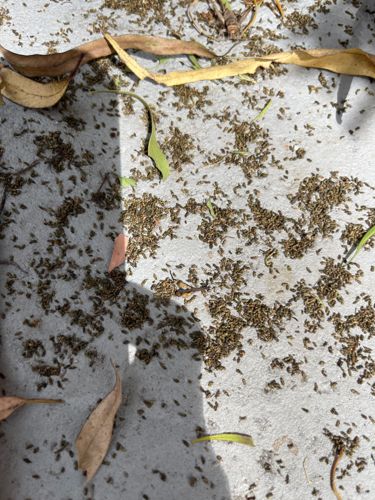Springtails (Collembola generally, possibly Entomobrya sp. or similar ground-dwelling species)
Scientific Name: Collembola (as an order, specific species cannot be determined from the image alone, but they are clearly springtails)
Order & Family: Order: Collembola (though sometimes treated as a subclass or suborder within Hexapoda); Family: Various, but given the appearance and aggregation, possibly Entomobryidae or Isotomidae.
Size: Typically very small, ranging from 0.2 mm to 10 mm, but most commonly 1-3 mm.

Natural Habitat
Damp environments, including soil, leaf litter, decaying wood, under bark, around fungi, and sometimes in damp indoor areas like basements or bathrooms. The image suggests an outdoor, possibly concrete or paved, area where moisture might accumulate.
Diet & Feeding
Mainly detritivores, feeding on decaying organic matter, fungi, algae, bacteria, and spores. Some may feed on living plant tissue but are not typically considered major plant pests.
Behavior Patterns
Springtails are typically found in moist environments, often gregarious, forming large swarms, especially after heavy rains or in humid conditions. They are known for their ability to jump using a furcula, a tail-like appendage tucked under their abdomen.
Risks & Benefits
Generally harmless to humans. They do not bite or sting and are not known to transmit diseases. They are beneficial decomposers in ecosystems, playing a crucial role in nutrient cycling and soil health. Large indoor infestations can be a nuisance, indicating dampness issues.
Identified on: 8/21/2025